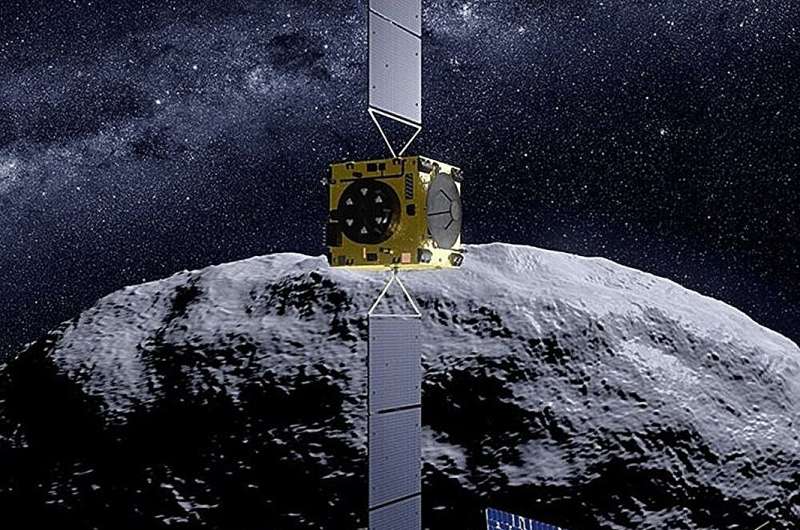This article has been reviewed according to Science X's editorial process and policies. Editors have highlighted the following attributes while ensuring the content's credibility:
fact-checked
trusted source
proofread
A pair of CubeSats using ground penetrating radar could map the interior of near-Earth asteroids

Characterizing near-Earth asteroids (NEAs) is critical if we hope to eventually stop one from hitting us. But so far, missions to do so have been expensive, which is never good for space exploration.
So a team led by Patrick Bambach of the Max Planck Institute for Solar System Research in Germany developed a mission concept that utilizes a relatively inexpensive 6U CubeSat (or, more accurately, two of them) to characterize the interior of NEAs that would cost only a fraction of the price of previous missions.
The mission, known as the Deep Interior Scanning CubeSat mission to a rubble pile near-Earth asteroid, or DISCUS, was initially floated in 2018. Its central architecture involves two separate 6U CubeSats equipped with a powerful radar. They would travel to opposite sides of an NEA and direct a radar to pass through the NEA's interior.
To understand more about the mission architecture, it's best to look at the type of asteroid best suited to being visited by DISCUS. The authors of the article suggest one about the size of Itokawa, the target of the first Hayabusa mission. It's about 330 meters in diameter, right in the size range the mission planners were looking for, and is designated as a "rubble pile," meaning the interior is relatively sparse.
A sparse interior is critical to the mission objectives, as an asteroid's density can dramatically impact the scientific toolkit needed to characterize it. For DISCUS, the mission team plans a radar antenna known as a half-dipole. This would transmit at a relatively low frequency, which is more likely to pass through larger objects.
Additionally, they plan to use a radar technique known as stepped-frequency modulation, which changes the radar's frequency to allow for the broadest range of characterizations.
The opposing spacecraft on the other side of the asteroid would then receive these radar signals, analyze whatever waveform deformations occurred, and correlate that to the materials the radar had to pass through. Calculations show that this technique should enable a resolution of a few tens of meters for the interior of an asteroid about the size of Itokawa.
However, they also have to be run through another spectral analysis technique called computed radar tomography. This technique is often used in radiology diagnoses on Earth—the name CT scan comes from—but it can also be used to analyze the interiors of solid objects in the solar system.
However, the science payload is only one part of the DISCUS package and would ideally only take up 1U of the 6U allotted on each probe. The other five would be taken up by a series of off-the-shelf components, including a propulsion system (2U), communication system (1U), and avionics suite (1U). The dipole antenna and solar panels would deploy outside the standard CubeSat housing, allowing for better power collection and signal strength.
One of the most critical selections is the propulsion system, which would enable an acceleration of around 3.2 km/s, allowing DISCUS to match speeds with at least some NEAs. Alternatively, the mission plans to slingshot the craft around the moon to get a boost of up to 4 km/s and gain access to even more asteroids.
A particular asteroid stood out to the team as they developed the mission design in 2018. Asteroid 1993 BX3 came within 18.4 times the distance to the moon back in 2021 and was traveling at a speed that DISCUS could match, so the mission design team was hoping to have a prototype up and running to allow for a launch to that particular asteroid.
Unfortunately, that didn't happen, and there hasn't been much work on the mission concept since the paper was published back in 2018. However, more and more missions are targeting NEAs, and CubeSats are becoming increasingly popular. Eventually, a CubeSat mission will visit one of these objects and will likely be based at least partially on some ideas from DISCUS.
Provided by Universe Today




















